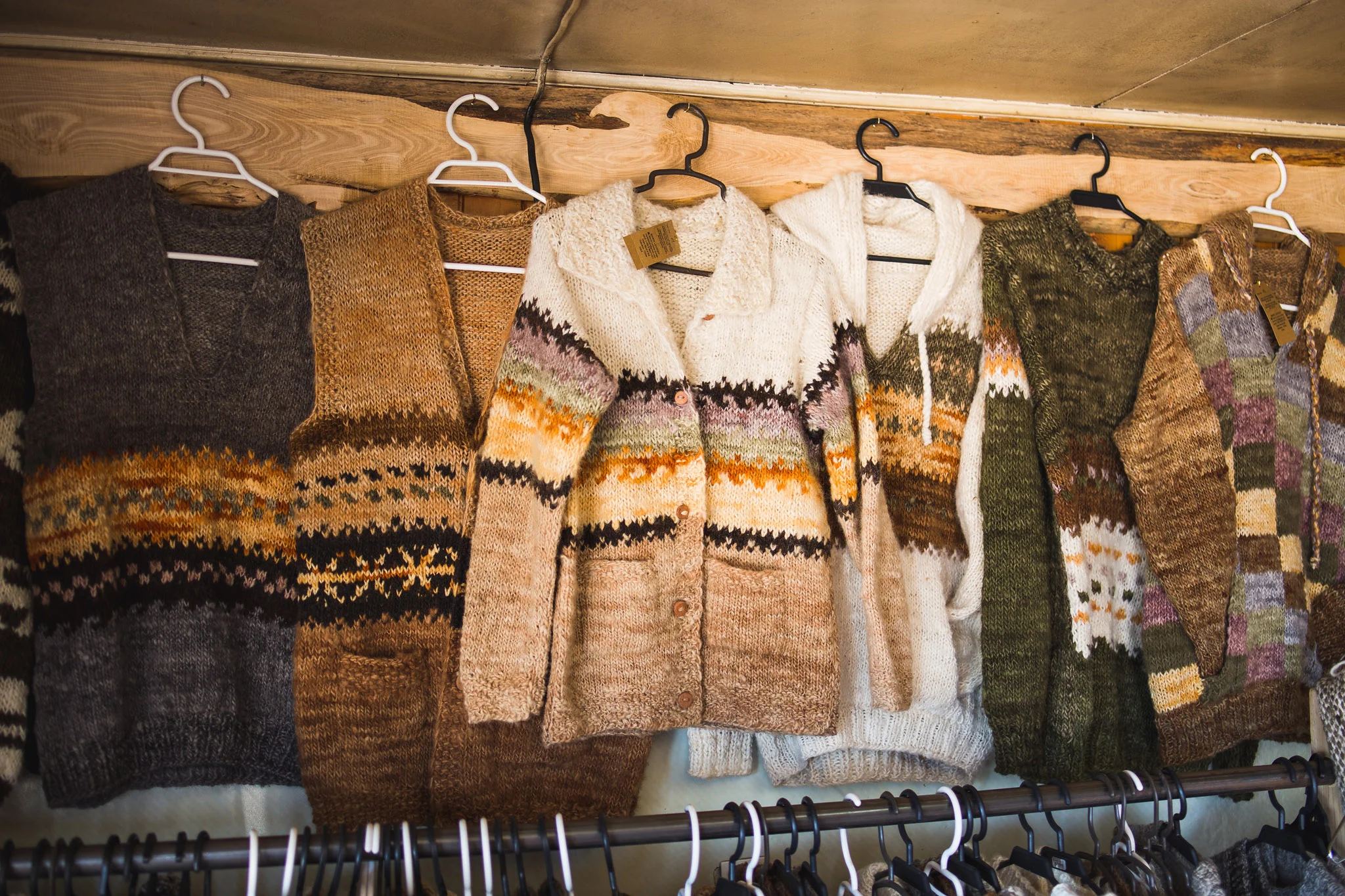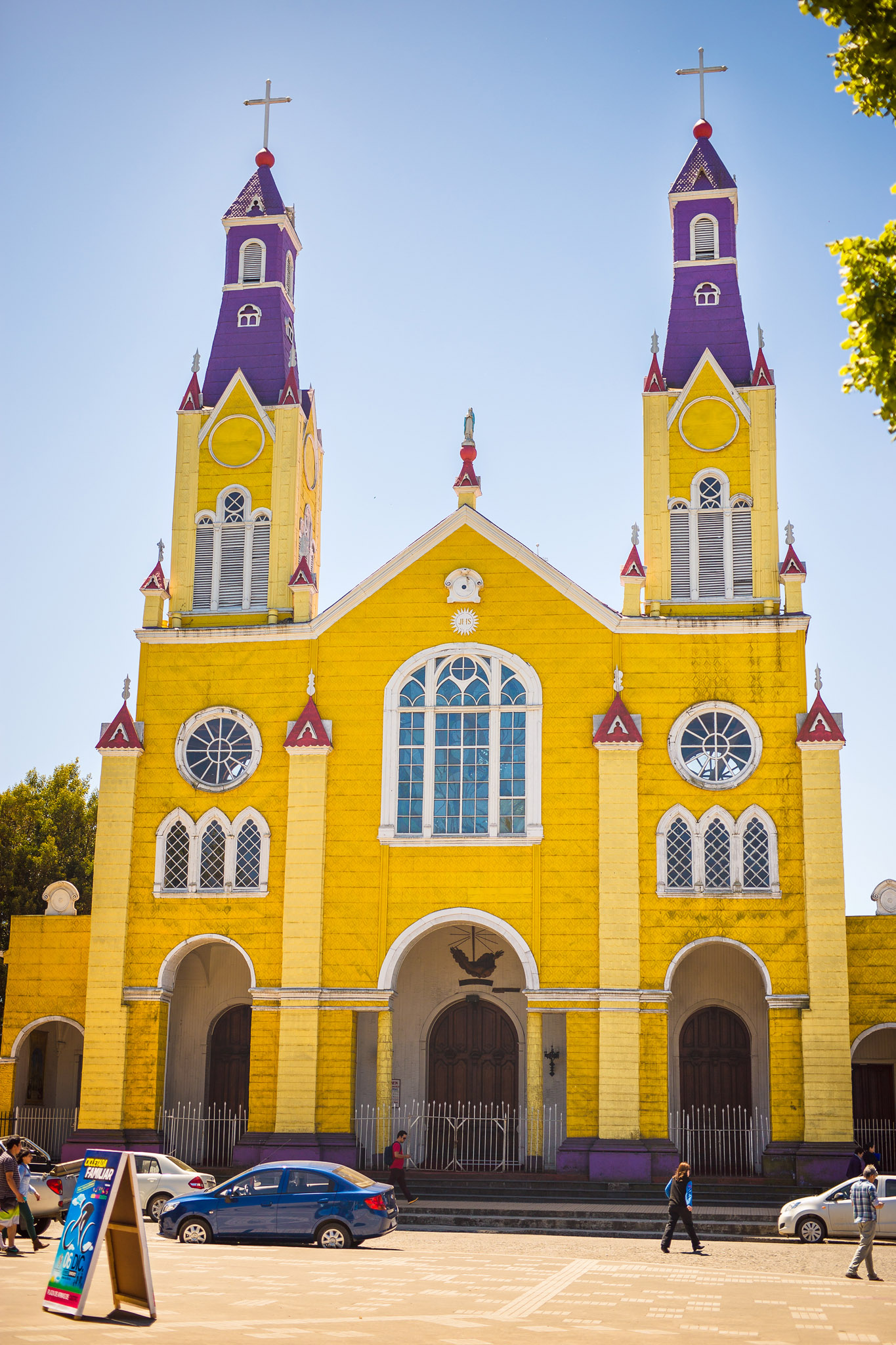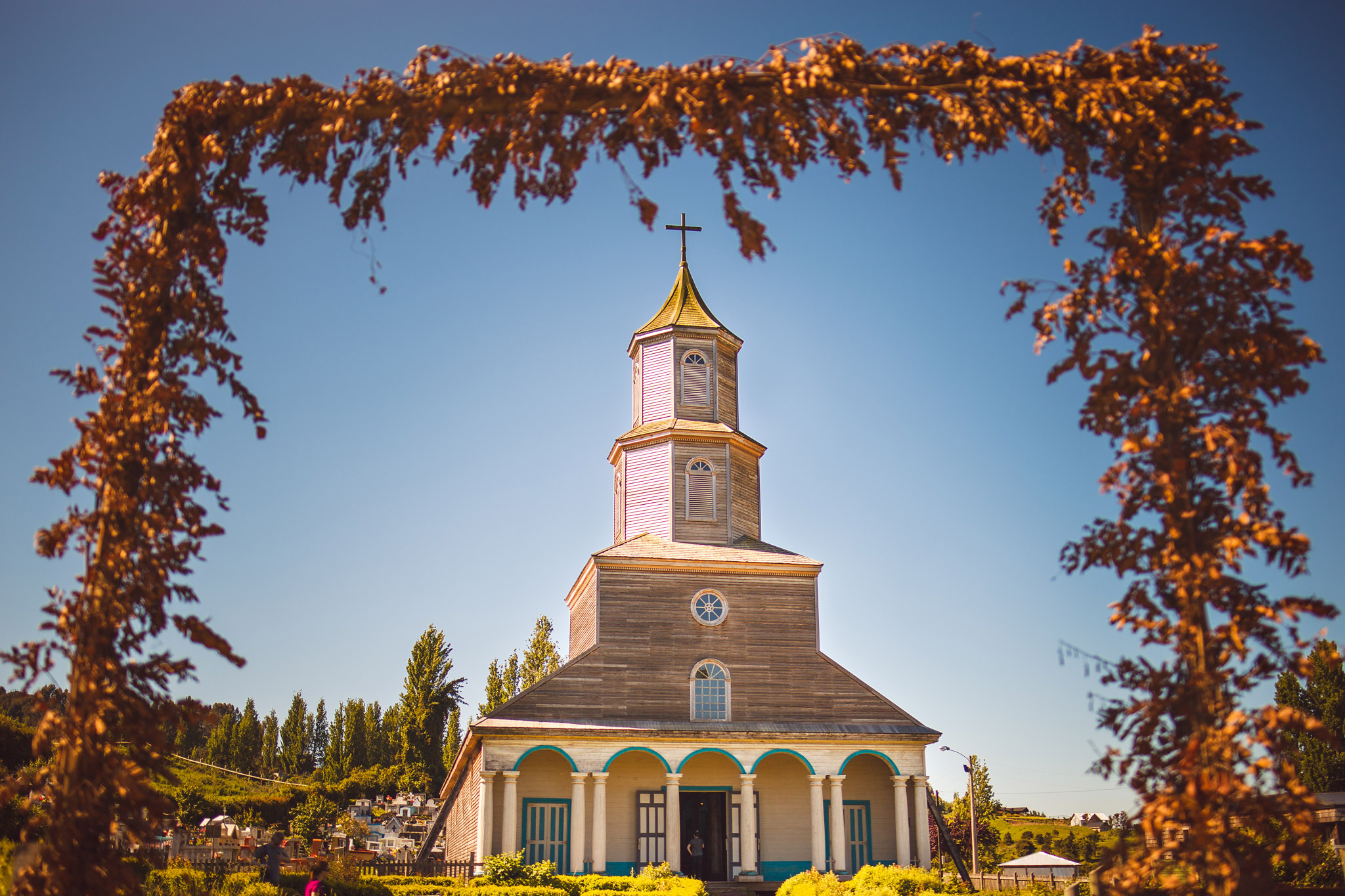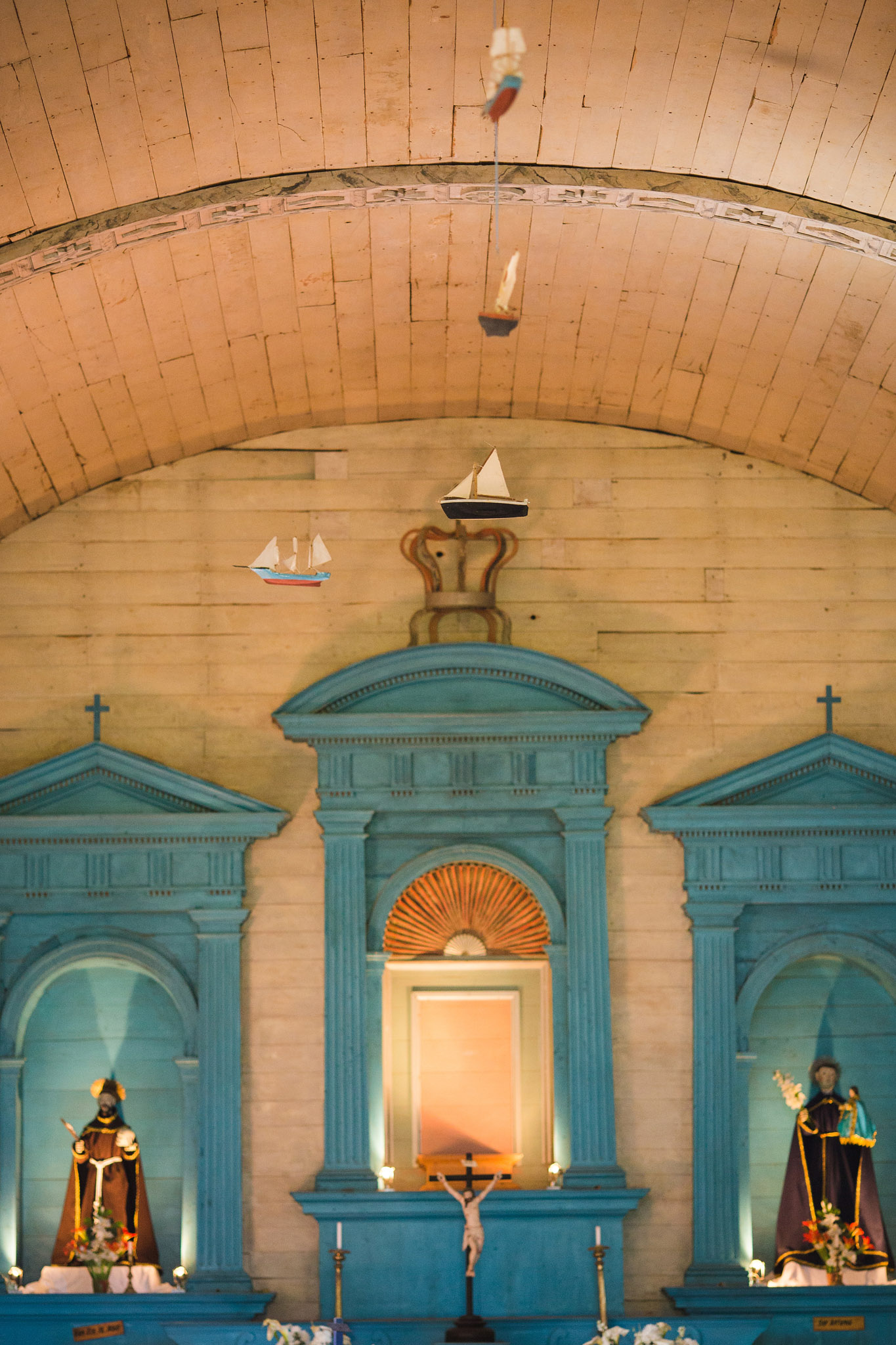Chiloé, namely it's biggest island "Isla Grande de Chiloé" - is the second largest island on the South American continent. As you will see, it's a quite different from the rest of Chile and our last stop in the lake district.
(English only article)
The only way to get there from mainland Chile is to take a ferry - the easiest is to go from Pargua - it's quick and reasonably cheap (more info for travellers at the end of the article). Once you're there, you can explore the huge island, as there's much to see - It is known for its distinct architecture using wooden shingles for roofs (tejuelas), houses on stilts along the water edge (palafitos), dating back to the 16th century, and more than 100 wooden churches, which 16 of them are Unesco World Heritage Sites. Not mentioning the beautiful coastline.
Oh, and more than 280 types of potato.
After visiting a few places and some seriously bad roads (we made a small detour) - we've arrived to Castro - the island's capital and the 3rd oldest city of Chile, established in 1567. Later it was the center of Jesuits, who brought education and business to the area.
It has an unfortunate history: earthquake(1646), fire(1729), another earthquake(1739), more fire(1890 and 1936), and flood(1960) due to... yet another earthquake. Despite that, it is still a very interesting and intriguing place to visit.
Iglesia San Francisco de Castro resisted to the last disaster and it was painted in 1987 in the occasion of visit of Jan Pavol II. Do not get confused though - shingles are not from wood but from tin (cin), imitating local architecture.
I have to say - it's one of the craziest churches. Yellow, violet, white, red. And it's actually not entirely straight, I believe. (contender for the "Leaning church of Chiloé"?)
Castro's perhaps most famous feature is something else than the church though - its traditional houses built on poles around the shoreline called Palafitos. Some people might view them as a bit favela-like, but for many it's a part of their cultural heritage and grew very fashionable in the past few years.
We found a small space between two of the houses and managed to get to the shore. Wasn't easy though, check the pics :)
Probably the most picturesque image I've taken here :)
Bonus: Unless you've been to Chile, it's hard to imagine the joy you'd feel as a coffee-holic, when you find an actual good coffee place (they mostly drink Nescafé and that's what you find in the shop, in the section "traditional").
We did - and oh, was it nice. First good coffee in a long time - if you happen to be there, check La Cafeta in the center of Castro.
That will be the end. Next time - the beautiful nature of Chiloé, beaches, dunes, horses, fishermen... If you don't want to miss it, consider subscribing to our newsletter. Don't worry, we won't bother you :)
Info for travellers
One thing about Chiloé - it is very easy to get on it, but if you want to continue down to the beautiful carretera austral, you have to take a ferry. It's best to plan a bit ahead, because the ferry runs only once a week - the best is to book them in person in the office in Castro (Latorre 238). Here's some info on the ferries:
- To get to to Chiloé from north, the easiest is to go from Pargua to Chacao by TransMarChilay company. The price for a car in 2016: 11 800 clp, they are going every 30-60 min even during the night. It only takes around 35 minutes
- To leave the island and continue south, we went From Quellon to Chaiten (operated by Naviera Austral), the price is 65 000 clp for a car and 12 000 clp per person (for some reason, we paid more - for 4 passengers and a car it was 130 000 clp). It leaves only on Thursday at 3:00 AM and it takes around 5 hours. You should be in the port 1 hour before the departure and 2 hours if travelling with a car… But honestly, we didn’t see the point, because they didn’t do anything before the departure. BTW, the price for a motorbike is 15 500 clp and for a bike 9 500 clp. You can buy tickets online on their webpage or in one of their agencies.
- There is also an another, longer route. It is from Quellón to Puerto Cisnes through Malinka and Puerto Gala, so you will also see other islands - and if you are lucky you can spot whales between December and April. It leaves on (and only on) Tuesday at 19:00. It takes around 12 hours and it costs 10 450 clp per person, 77 000 clp per car.
























